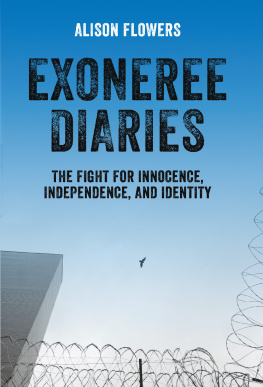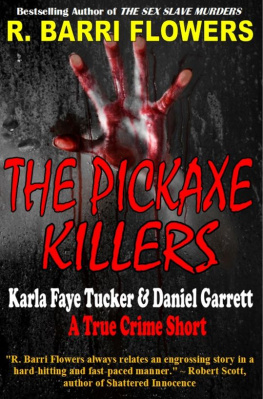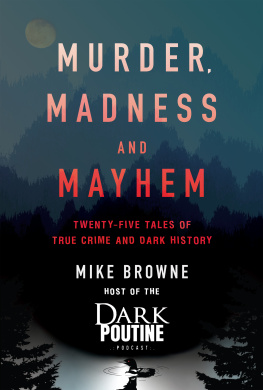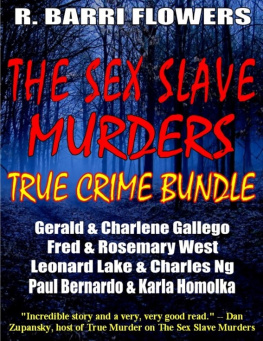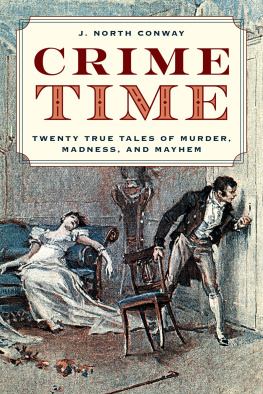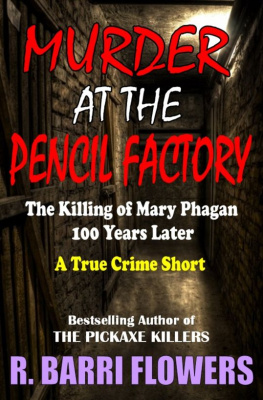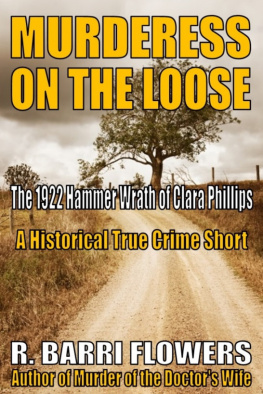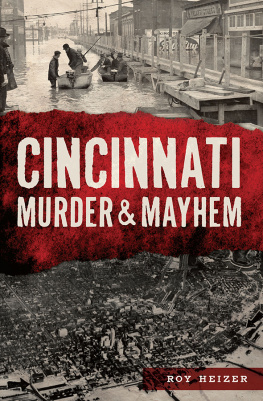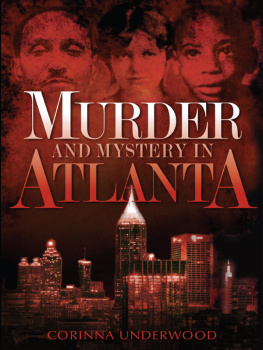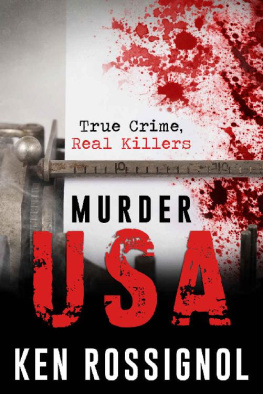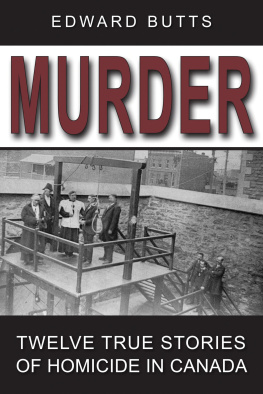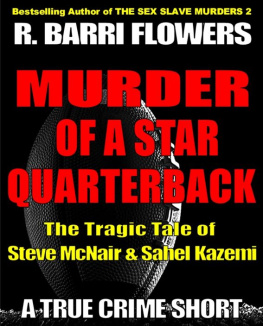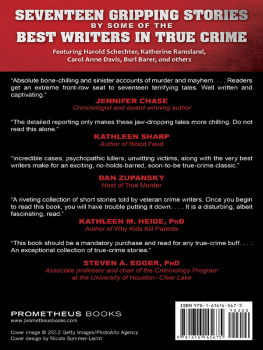
MURDER CHRONICLES
A Collection of Chilling True CrimeTales
Copyright 2014 by R. Barri Flowers atSmashwords. All rights reserved.
Cover Image Copyright Claire McAdams,2014
Used under license from Shutterstock.com
Smashwords Edition, License Notes
This ebook is licensed for your personalenjoyment only. This ebook may not be re-sold or given away toother people. If you would like to share this book with anotherperson, please purchase an additional copy for each recipient. Ifyou're reading this book and did not purchase it, or it was notpurchased for your use only, then please return to Smashwords.comand purchase your own copy. Thank you for respecting the hard workof this author.
TRUE CRIME BOOKS BY R. BARRI FLOWERS
The Dynamics of Murder: Kill or Be Killed
Masters of True Crime: Chilling Stories ofMurder and the Macabre (editor)
Murders in the UnitedStates: Crimes, Killers, and Victims of the20th Century
Prostitution in the Digital Age: Selling Sexfrom the Suite to the Street
Serial Killer Couples: Bonded by SexualDepravity, Abduction, & Murder
The Sex Slave Murders: The True Story ofSerial Killers Gerald & Charlene Gallego
TRUE CRIME SHORTS
Dead at the Saddleworth Moor: The Crimes ofIan Brady & Myra Hindley
Killers of the Lonely Hearts: The Tale ofSerial Killers Raymond Fernandez & Martha Beck
Mass Murder in the Sky: The Bombing of Flight629
Murder at the Pencil Factory: The Killing ofMary Phagan 100 Years Later
Murder of a Star Quarterback: The Tragic Taleof Steve McNair & Sahel Kazemi
Murder of the Banker's Daughter: The Killingof Marion Parker
The "Gold Special" Train Robbery: DeadlyCrimes of the D'Autremont Brothers
The Amityville Massacre: The DeFeo Family'sNightmare
The Pickaxe Killers: Karla Faye Tucker &Daniel Garrett
The Sex Slave Murders 2: The Chilling Storyof Serial Killers Fred & Rosemary West
* * *
PRAISE FOR TRUE CRIME BOOKS BY R. BARRI FLOWERS
"Selected as one of Suspense Magazine's Bestof 2011 books." John Raab, CEO/Publisher of Suspense Magazine onTHE SEX SLAVE MURDERS
"A gripping account of the murders committedby husband-and-wife serial killers Gerald and Charlene Gallego." Gary C. King, author of Blood Lust on THE SEX SLAVE MURDERS
"R. Barri Flowers always relates anengrossing story." Robert Scott, author of The Last Time We SawHer on THE SEX SLAVE MURDERS
"A model of exposition not to be missed byanyone interested in the annals of American criminal behavior." Jim Ingraham, Ph.D., professor emeritus of American Studies atBryant University on THE PICKAXE KILLERS
"Striking, well-written tales sparkle in thisocean of murder." Diane Fanning, author of Mommy's Little Girl onMASTERS OF TRUE CRIME
"Exhaustively researched, each storytellerbrings their own unique prose to these pages, creating what willsoon become a true crime classic." Kevin M. Sullivan, author ofThe Bundy Murders on MASTERS OF TRUE CRIME
"This book should be a mandatory purchase andread for any true-crime buff." Steven A. Egger, Ph.D., associateprofessor on MASTERS OF TRUE CRIME
"Incredible cases, psychopathic killers,unwitting victims, along with the very best writers, make for anexciting, no-holds-barred, soon-to-be true-crime classic." DanZupansky, host of True Murder on MASTERS OF TRUE CRIME
"An indispensable sourcebook for anyoneinterested in American homicide, from law-enforcement professionalsto armchair criminologists." Harold Schechter, author of TheSerial Killer Files on THE DYNAMICS OF MURDER
"Vivid case studies of murder to complementthis well researched criminology text." Scott Bonn, Ph.D.,criminology professor on THE DYNAMICS OF MURDER
* * *
TABLE OFCONTENTS
The Killing of Mary Phagan: 100 YearsLater
On Saturday April 26, 1913,Mary Phagan, age thirteen, became the victim of a violent death atthe National Pencil Factory in Atlanta, Georgia where she wasemployed. Her job at the factory was putting erasers into the metalcasing atop pencils. The appalling crime left residents of the cityoutraged and wanting justice for the victim. Fingered for the crimeand convicted was factory superintendent Leo Frank, a Jewish-American, whowould be hanged by a lynch mob in spite of controversy surroundingFrank's guilt. The century old case wasevery bit as captivating and publicized as any high profile crimetodaycomplete with a shaky investigation, anti-Semitism, racism,stereotyping, rush to judgment, injustice, and murderwith theeffects and outcome of the case still being felt to thisday.
* * *

Mary Phagan was born in Marietta, Georgia onJune 1, 1899 to tenant farmers John and Frances Phagan. Followingher father's death shortly thereafter from the measles, the familyrelocated to East Point, Georgia where Frances ran a boarding housewhile her children went to work in the mills.
Mary dropped out of school when she was tenyears old and worked part-time for a textile mill. By 1911, she hadgone to work for a paper manufacturing plant. The owner of theplant, Sigmund Montag, was the National Pencil Company treasurer.The following year, Frances Phagan married John WilliamColeman.
During the spring of 1912,Mary went to work for the National Pencil Company in Atlanta, whereshe operated a knurling machine that fitted rubbererasers into the metal casing atop pencils, earning $4.05 a weekfor a fifty-five hour work week. The factory superintendent was atwenty-nine-year-old Jewish-American named Leo Frank.
On the cool, crisp late Saturday morning ofApril 26, 1913, thirteen-year-old Mary Phaganwho had beentemporarily laid off earlier in the week because the factory wasshort on brass sheet metaltook the trolley to Atlanta from EastPoint in order to collect wages she was due for a twelve hour workweek. Afterward, she had plans to get together with friends tocelebrate Confederate Memorial Daya holiday in some Southernstates since 1866 that honored soldiers who fought for theConfederacy during the Civil War.
It was around noon when Maryarrived at the Pencil Factory, a four-story stone building indowntown Atlanta that encompassed the entire block of 37 to 41 South ForsytheStreet. She came inside the main entrance on the first floor andmade her way toward the stairway en route to the second floor,where she had performed her duties in the "tipping department"section of the metal room prior to being laid off. It was also thefloor where factory superintendent Leo Frank's office was. Not faraway from the stairs on the first floor was a hole, often coveredby a hatch, which led to the basement via a ladder.
Mary Phagan went to Leo Frank's office,where he handed her a paycheck for $1.20. Frank would lateracknowledge paying her and say that she left his officeafterward.
This would be the last time Mary Phagan wasseen alive by anyone who could attest to that.
* * *

Leo Frank was born in Cuero, Texas on April17, 1884 to parents Rudolph and Rae Frank. A few months later, thefamily relocated to Brooklyn, New York, where Frank would laterattend Pratt Institute for his high school education. He graduatedin 1902 and enrolled in Cornell University, majoring in mechanicalengineering and participating in sports, the debate team, andphotography before receiving his degree in June 1906.
Next page


